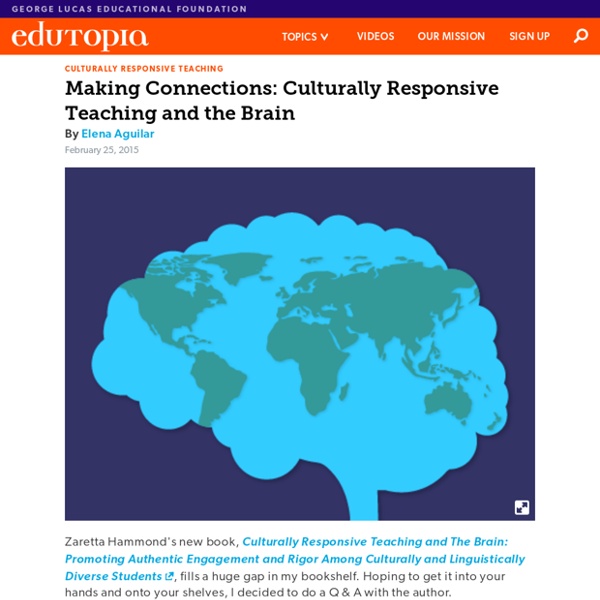10 things every white teacher should know when talking about race
This week on the Truth for Teachers podcast: 10 things every white teacher should know when talking about race in the classroom Let’s start by addressing the elephant in the room–why I am talking only to white people? Isn’t that racist? (Hold that question in your mind, because I want you to ask yourself that same question again after you’ve read my words here, and see if your thought process has changed.)
Equality Is Not Enough: What the Classroom Has Taught Me About Justice
Imagine this situation: A classroom of students is settling down to work on a writing task. All of a sudden, one student exclaims, “That’s not fair! Why do they get to listen to the instructions on the headphones! I want to listen, too!” This happens way more often than you think.
HuffPost is now a part of Verizon Media
I have taught literature at the college level for almost a decade and at as many as six different campuses. These have mainly been classes that were focused on non-western writing. One semester, I had assigned Nigerian novelist Chimamanda Ngozi Adichie’s Purple Hibiscus and only a week earlier her TED talk, Danger of a Single Story had started to circulate on the web. I sent the link to my students and thought we could incorporate it into our discussion on colonialism, multiculturalism, issues of race and of course, the novel itself.
Doing a YA Collection Diversity Audit: Understanding Your Local Community (Part 1)
Tomorrow as part of the Library Journal/School Library Journal training on diversity Diversity and Cultural Competency Training: Collections & RA (which you should do), I will be doing a presentation on doing a diversity audit. I will outline what a diversity audit is, how to do one, and what I learned doing mine. I will be sharing parts of that presentation with you here tomorrow. As part of doing a diversity audit, I tried to develop an understanding of what a diverse/inclusive book collection might look like: I tried to develop target goals.
A Culturally Responsive Approach to Discussing Thanksgiving in the Classroom
In this ongoing series, we explore what culturally responsive teaching looks like at different grade levels and offer concrete examples and resources. Last week we explored going beyond “The Single Story”. Today, educator Lindsay Barrett offers a culturally responsive approach to discussing Thanksgiving in the Classroom. More in this series:
For Our White Friends Desiring to Be Allies
Author's Note: I'm writing this in hopes that it can be used to lighten the load of marginalized folks, keeping in mind that not all marginalized people want to engage in the ally conversation, and that is perfect as well. For those who do, my prayer is that when someone asks you the question, “how can I be a stronger ally?” you might choose to save your breath/energy and send this in its place. I have been asked by two dear friends, “how can I be a stronger ally?” Being the slow emotional processor that I am, I wanted to spend some time with this before I answered them.
Strategies To Support Multicultural Instruction
Essential for developing multicultural/diverse perspective learnings is a positive and trusting classroom environment - one in which all students are made to feel welcome, comfortable, and respected. Listed below are several strategies that are particularly useful in promoting multicultural/diverse perspective learnings in such a classroom. Questioning Styles Questioning techniques that personally involve students will allow them to respond in a way that reflects their cultural diversity and that will expose their fellow students to those differences (Evans, 1991). Role-Playing Role-playing is a versatile activity that allows students to express their opinions in a realistic situation.
60 Books about Disabilities and Differences for Kids
As a teacher, or parent, who works in education… we meet a lot of students with different abilities and specialties. And sure, we have Autism Awareness month and disability awareness… but it’s so much more than just being aware. (This post contains affiliate links.)
Classroom Library Assessment: How Culturally Responsive is Your Library?
Teachers, let’s talk about a popular topic across education blogs and Pinterest: the classroom library. A quick search on the Internet results in numerous tips, tricks, and ideas for different ways to configure and organize your classroom library. It’s an intensive and thoughtful process that involves thinking about genre, reading levels, interest levels, grade-level content, categories, and themes. Unfortunately, we often see classroom libraries that group diverse books into categories that isolate or limit their use. Simply having a book bin labeled “cultures from around the world” or “black history month books” does not mean your library is culturally responsive.
Adolescent Identity Development: What to Expect in Teens
Adolescent Identity Development: The Factors of Change Among the profound and exciting changes taking place in adolescence is the process of self-discovery. Our teens are working to figure out who they are, making adolescent identity development a central feature of teen life.



